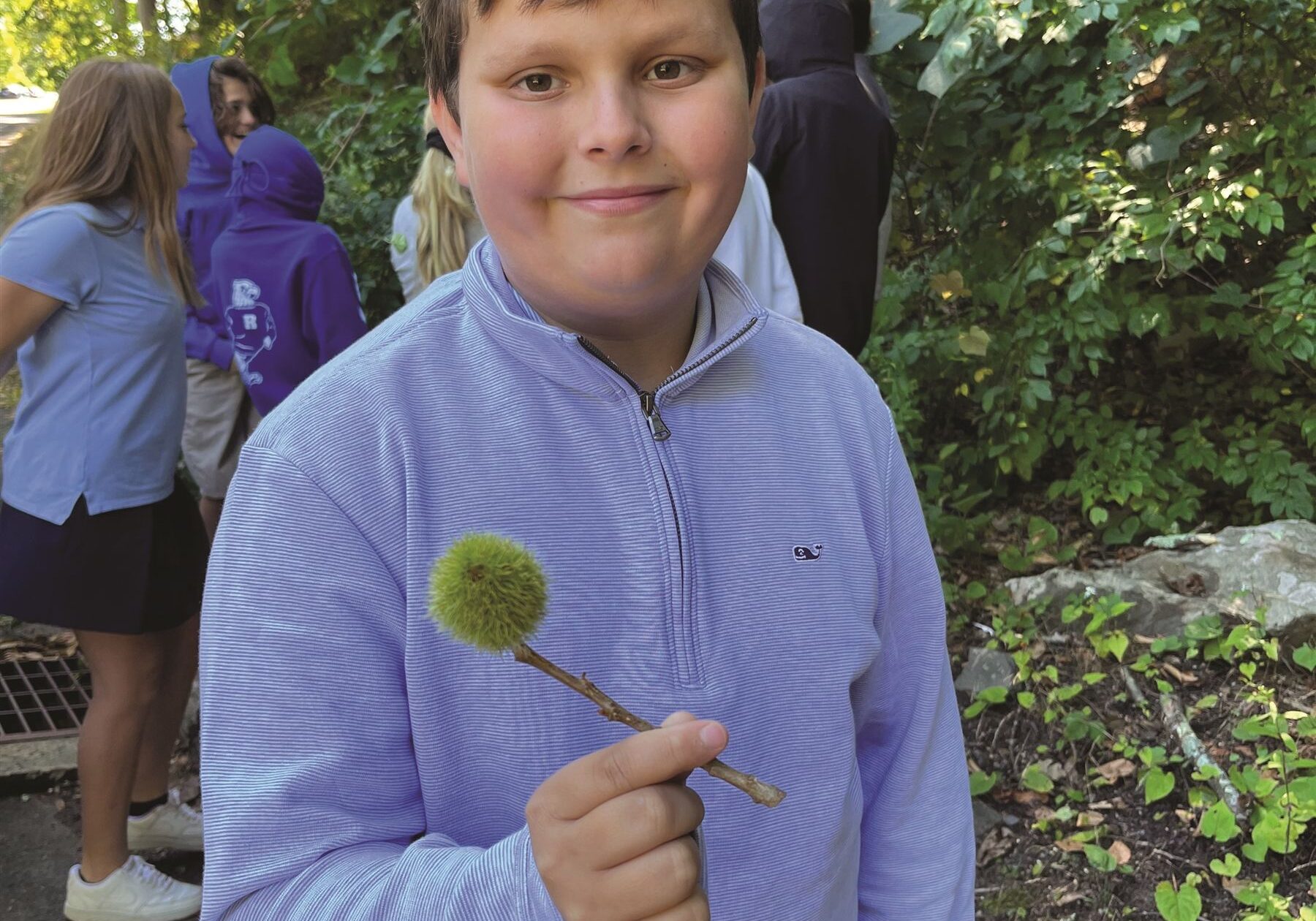Renbrook’s American Chestnut

Among the three Renbrook trees, one caused notable excitement. It showed no obvious signs of blight and was doing well as a medium size tree. It had even produced a small crop of infertile chestnut burs that fall. Identifying wild chestnuts showing higher natural resistance to chestnut blight is of particular importance for TACF. Cross-pollinating such trees with similar ones could result in the genes responsible for their resistance being passed to their offspring. TACF operates a network of 500 breeding orchards, managed through state-level chapters in partnership with private landowners and land trusts, where these higher resistance trees are planted, including seven in Connecticut.
Before Renbrook’s special chestnut tree could participate in this effort, however, it needed to be pollinated. Since chestnuts are unable to self-pollinate, in early July the president of the CT chapter of TACF, Jack Swatt, along with an arborist and bucket truck crew from Eversource, came to Renbrook to hand-pollinate the tree. They brought with them pollen freshly collected from a flowering chestnut in Mystic, CT. Male and female chestnut flowers are small, white, and found together on flexible stalks called catkins, often high up in the treetop. After receiving a tutorial on how to apply the pollen to each flower, the Eversource crew went into action. Raising the great boom of their truck, the crew were able to pollinate several catkins. Afterwards, they covered them with white paper bags to reduce the chance of contamination from any non-native chestnuts which might be in the area. Then the wait for autumn began.
On a cool late September morning, Mr. Swatt and the Eversource crew met our Life Science class at the tree. He gave an engaging talk about the history of the American chestnut tree, the blight, and the mission of TACF. As he spoke, he passed around a brown paper bag full of large, green, prickly chestnut burs for everyone to handle. Next, Julian Picciano, the Eversource arborist, gave a safety briefing about the bucket truck and explained his work as a professional arborist, including climbing very tall trees. As he spoke, the engine powering the boom roared as it extended up into the canopy. Moments later, the weather-beaten white paper bags with their burs were back on the ground.
Of the flowers pollinated earlier that summer, only one developed into a green chestnut bur.
Unfortunately, after waiting a few weeks for the bur to open, the single nut turned out to be unviable. While this was not the result we were hoping for, it was an important step forward for the Renbrook chestnut tree, for the Life Science students, and for TACF. Without the collaboration between TACF and Eversource, the Renbrook chestnut would likely never have been pollinated, since there are very few flowering chestnuts surviving in the area. Our Life Science students’ experience in the dendrology unit was greatly enriched by seeing how the burs were collected, thinking about reasons why the pollination might not have worked, and having the opportunity to learn about how professionals like Mr. Swatt and Mr. Picciano work with trees and about the efforts to restore the American chestnut. And lastly, for the CT chapter of TACF, knowing there is a healthy, flowering American chestnut on Renbrook’s campus helps their efforts to create a blight resistant chestnut, native to Connecticut soils, and to catalogue the genetic diversity of the species in the state.
Our plan is to try again next summer to pollinate Renbrook’s special chestnut tree. If we have better luck, some Renbrook-born chestnuts could find a home in one of TACF’s orchards. Stay tuned!